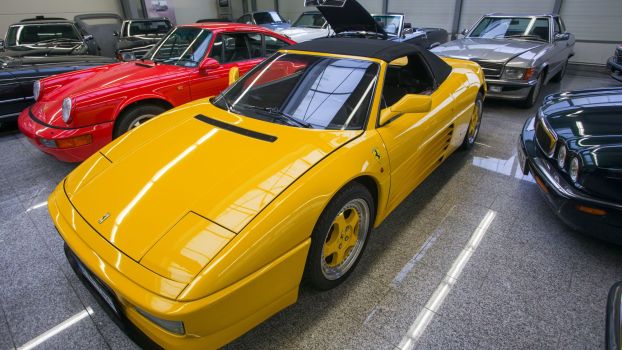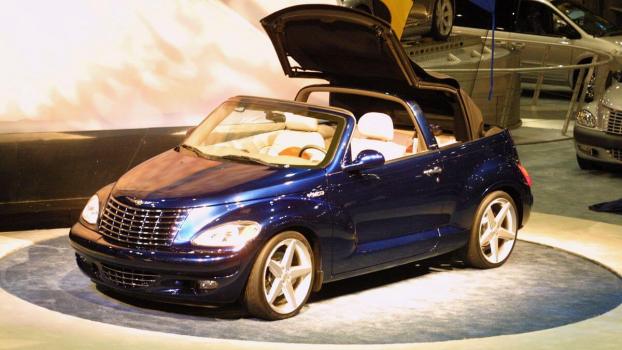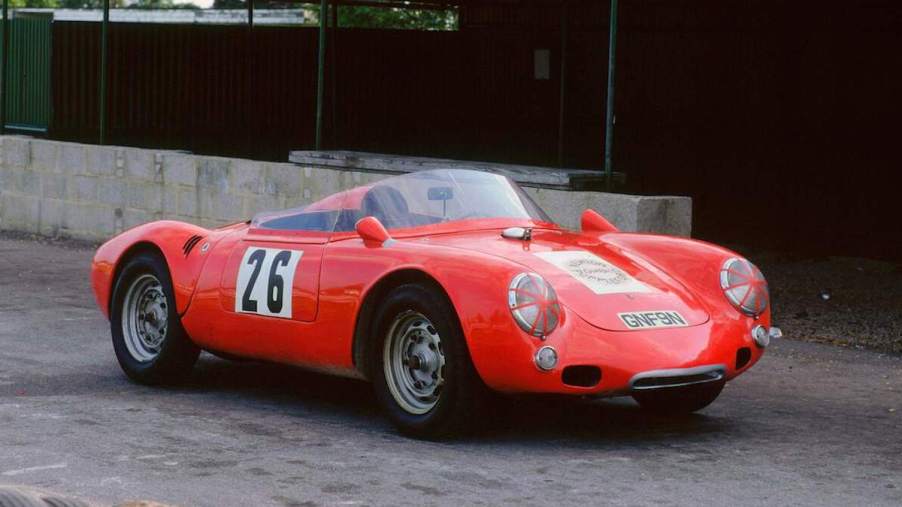
At Least 10 Automakers Have Cars Named Spider/Spyder
The Volkswagen Beetle. The Ford Bronco. The Chevrolet Corvette Stingray. For decades, automakers have invoked the names of animals to define their cars. Certain creatures connote specific types of vehicles, and the industry’s naming conventions have led to many convertibles called “Spider” or “Spyder.” Equating the abilities of arachnids and the latest sports car doesn’t make sense on its face, so how did this tradition begin? To answer that question, we must go back to the 19th century.
‘Spider’ became a nickname for transportation in the 1800s
Several terms — such as “dashboard,” “trunk,” “rumble seat,” “boot,” and “tonneau” — originated in the era of horse-drawn carriages. “Spider” is another to add to that list.
In the late 1800s, coachbuilders created carriages that became commonly known as spiders or phaetons. They were lightweight vehicles with a removable top, making them perfect for sports and shows rather than cross-country tours.
The carriage’s small body, large wooden wheels, and thin spokes gave the ride a vague resemblance to a spider, hence the nickname. Carriages soon faded thanks to the car’s invention, but the “spider” found a similar association in a new technological age.
‘Spider’ and ‘spyder’ allegedly became used for cars thanks to an Italian mispronunciation
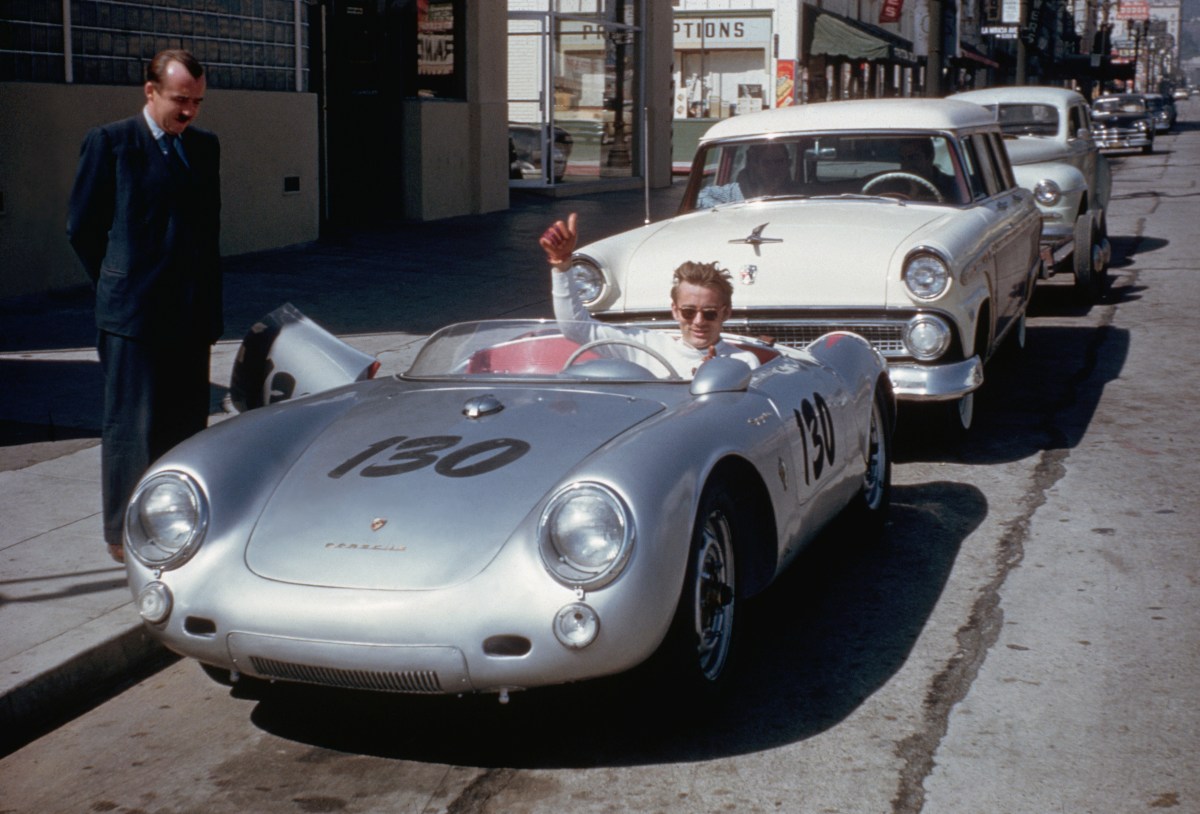
According to a possibly apocryphal story, the transition of “spider” to its more modern use in car names is due to an Italian automotive journalist’s misunderstanding of English. The writer traveled to New York to attend an auto show in 1953.
During the show, he spied a new street-legal Porsche model that later became synonymous with the 1950s teen icon James Dean after he died behind the wheel of one in 1955. The Porsche 550 Speeder impressed the journalist, who phoned his publication in Milan. His co-workers understood some details, such as the 550 Speeder having no roof, but the car’s name got lost in translation.
Instead of calling it the Speeder, the magazine printed the car’s name as “Spider” because Italian speakers pronounce “i” as a long “e.”
There’s no way to know how much of that origin story is true and how much of it has been exaggerated, but it’s a fun addition to the history of why so many convertible car names include “spider.” There’s no sense of romanticism in why some automakers, including Porsche, spell it “spyder.” That’s down to the particulars of different languages. According to J.D. Power, Italians spell it “spider” because there’s no “y” in their alphabet. So, if you see a Spider on the road, it likely has Italian roots.
What are the best-known ‘Spider/Spyder’ cars?
Many models named “Spider” or “Spyder” have rolled off production lines in the past few decades. Here are some of the most famous:
Alfa Romeo Spider
The Alfa Romeo Spider debuted in 1966 as a successor to the brand’s Giulia line. The company made four Spider generations, the first of which gained a more significant imprint in America thanks to its presence in the seminal film The Graduate. The original Spider went out of production in 1994, and though Alfa Romeo made other versions after that, the Italian brand’s struggle to generate sales forced it to stop lines like the 4C Spider in 2020.
Audi R8 Spyder
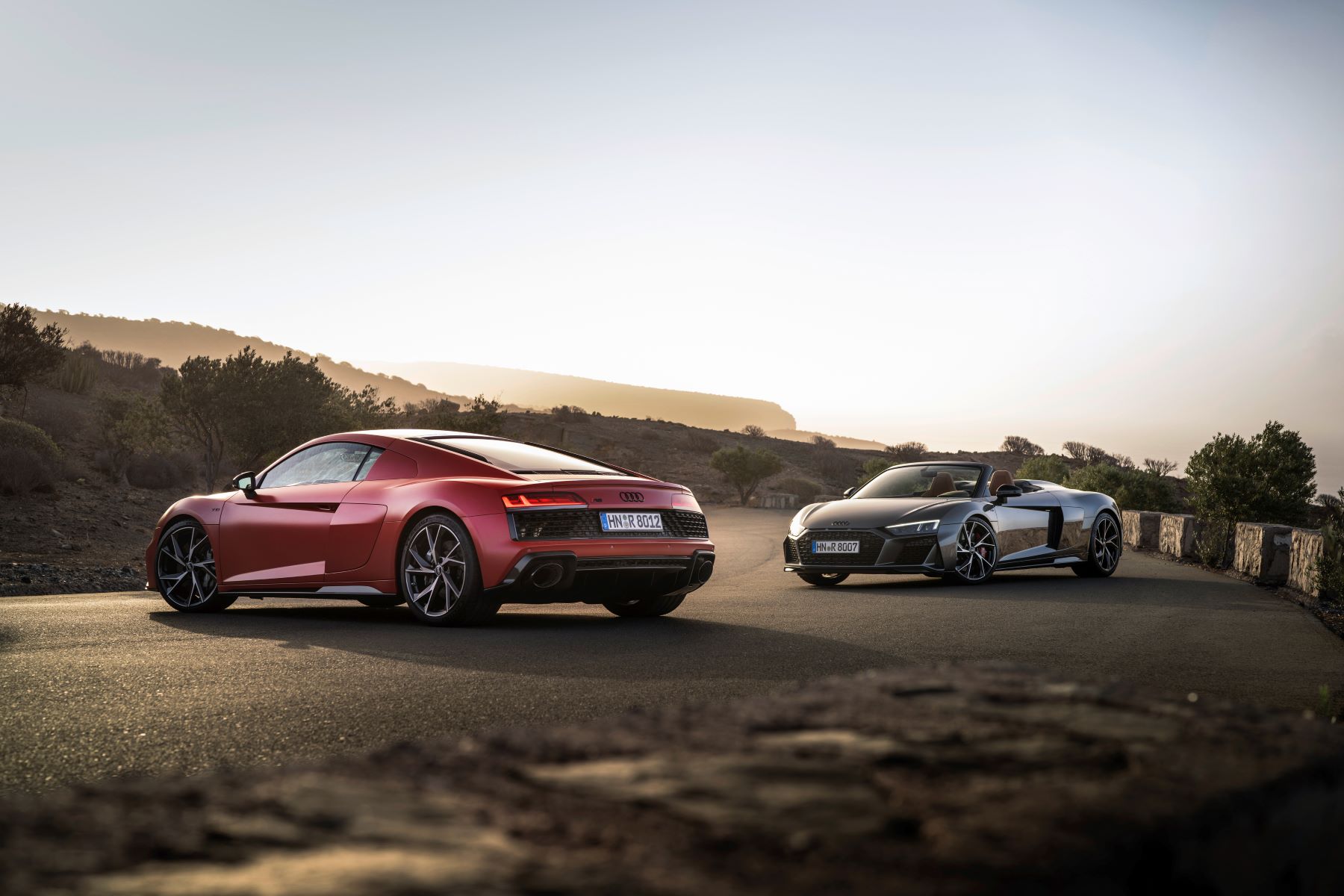
The Audi R8 Spyder carries a hefty price tag, but the German luxury sports car’s general excellence makes it worth the money. The 2023 model packs a powerful V10 engine with a palpable sense of speed and quick acceleration while still being smooth around tight corners. The downsides are the R8’s poor gas mileage and small cargo area. Despite being widely praised, Audi plans to kill the R8 Spyder line as the company moves toward electric cars.
Ferrari F8 Spider
The Ferrari F8 Spider began life as an offshoot of the F8 Tributo, but the modifications to the convertible give this car a distinct style. Its 3.9-liter V8, which won the International Engine of the Year award in 2019, provides a high level of performance, while the Spider also sticks to modern emissions standards and is 44 pounds lighter than the preceding 488 Spider. You’ll find many other “Spider” models in the Ferrari lineup because the Italian supercar maker often uses that term for its convertible body style. The latest is the plug-in hybrid SF90 Spider, a sibling of the SF90 Stradale coupe.
Fiat 124 Spider
The original Fiat 124 Sport Spider was manufactured from 1966 to 1985. Fiat brought back the “Fiata” in 2016 but discontinued it in 2020, even though the car was decent.
Lancia Aurelia B24 Spider
Only 240 examples of this model were built in 1954 (181 of which were for lefthand driving), but that didn’t stop the Lancia Aurelia B24 Spider from becoming memorable. Collectors pay handsomely for these Italian cars.
Lamborghini Huracán Spyder
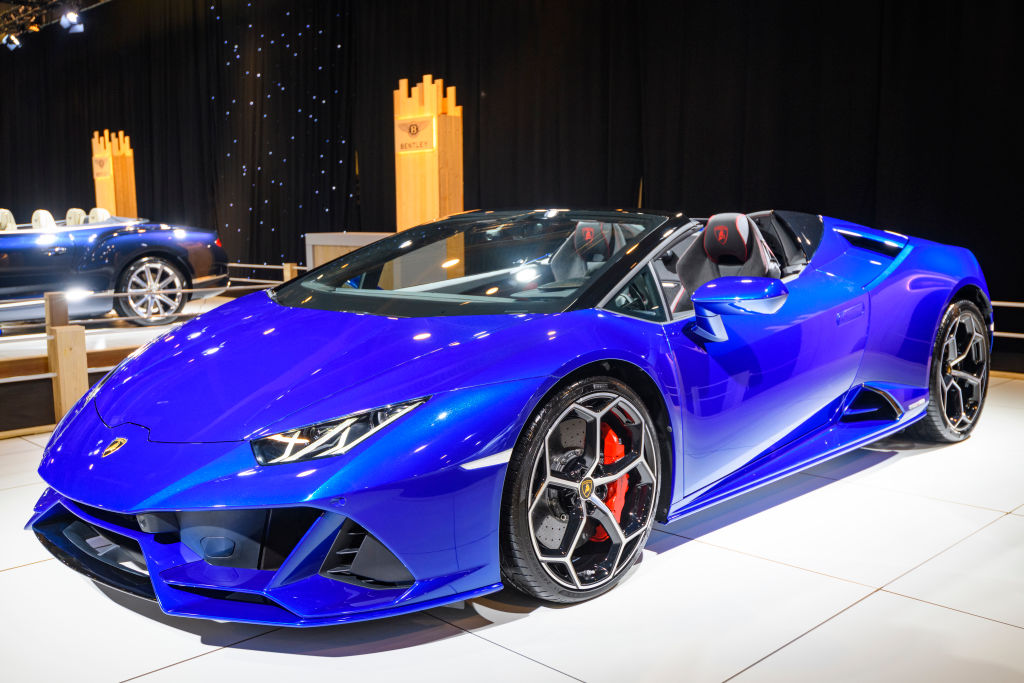
The Italian automaker introduced the Huracán Spyder in 2015 as a convertible variant of the Huracán LP 610-4 and continues to grace the Lamborghini stable. A more recent iteration is the Huracán Evo RWD Spyder, a convertible version of the rear-wheel-drive supercar that debuted in 2020.
Maserati Spyder
Commonly known as the 4200 GT, the Maserati Spyder went into production in 2001. It helped establish the Italian car company in North America after an 11-year hiatus and was hailed as one of the best grand tourers of its day. Maserati replaced the Spyder in 2007 with the GranTurismo.
McLaren 720S Spider
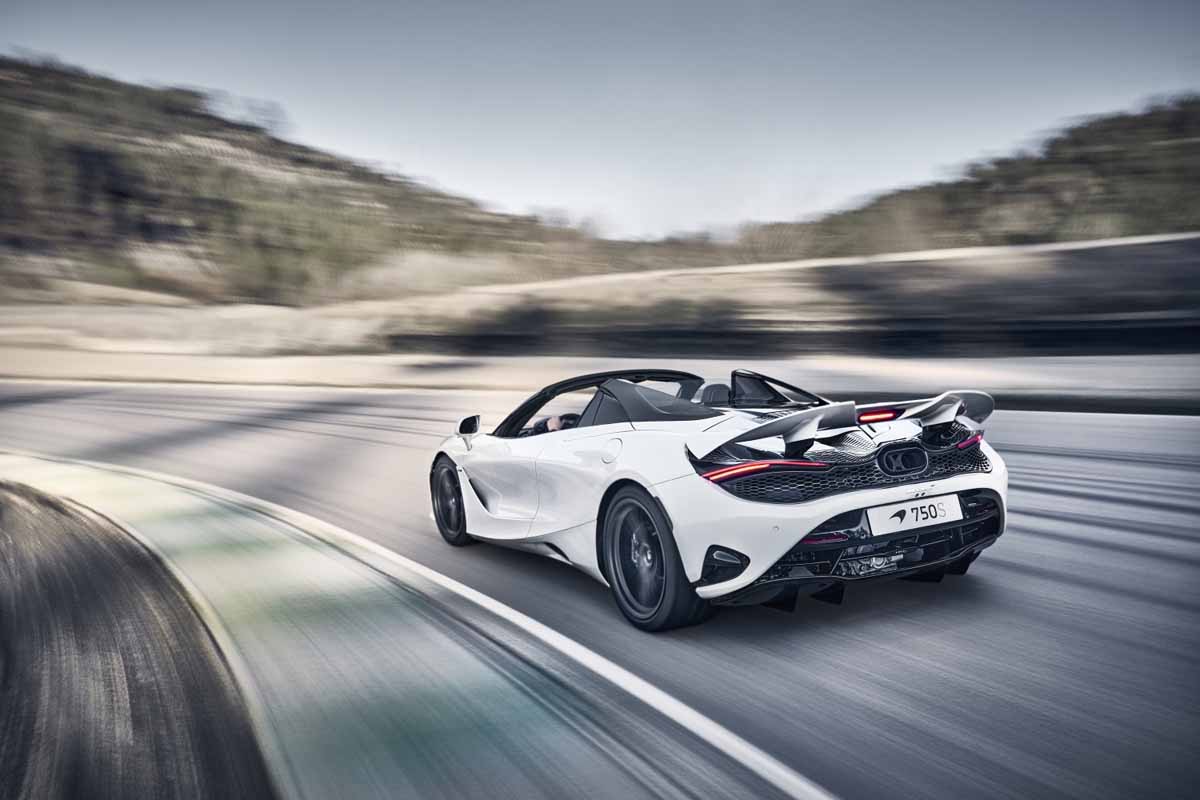
The British luxury auto manufacturer unveiled the McLaren 720S Spider in 2018 as a new open-top supercar. The 720S sold well and earned high regard, but those factors didn’t stop McLaren from killing the flagship only five years after it went into production, most likely due to Europe’s moves to encourage more electric vehicles.
Mitsubishi Eclipse Spyder
Mitsubishi added the Spyder to its sports car lineup in the Eclipse’s second of four generations. The first two generations made the strongest cultural imprint thanks to their importance in the tuner scene. After that, the Eclipse lost its luster, and Mitsubishi discontinued the car in 2011.
Toyota MR2 Spyder
The MR2 Spyder was part of the third generation of Toyota’s mid-engine sports car available in 1999. Although it was a decent vehicle overall, most consumers overlooked the MR2. So, Toyota killed the line at the end of the 2005 model year due to low sales.
Several of these convertibles are no longer in active circulation, but the persistence of the “spider/spyder” car name shows its evocativeness as a marketing tool. When auto enthusiasts see a vehicle named after an arachnid, they get an idea about its specifications and design philosophy. As much as the auto industry changes over time, the spider’s appeal remains strong.
